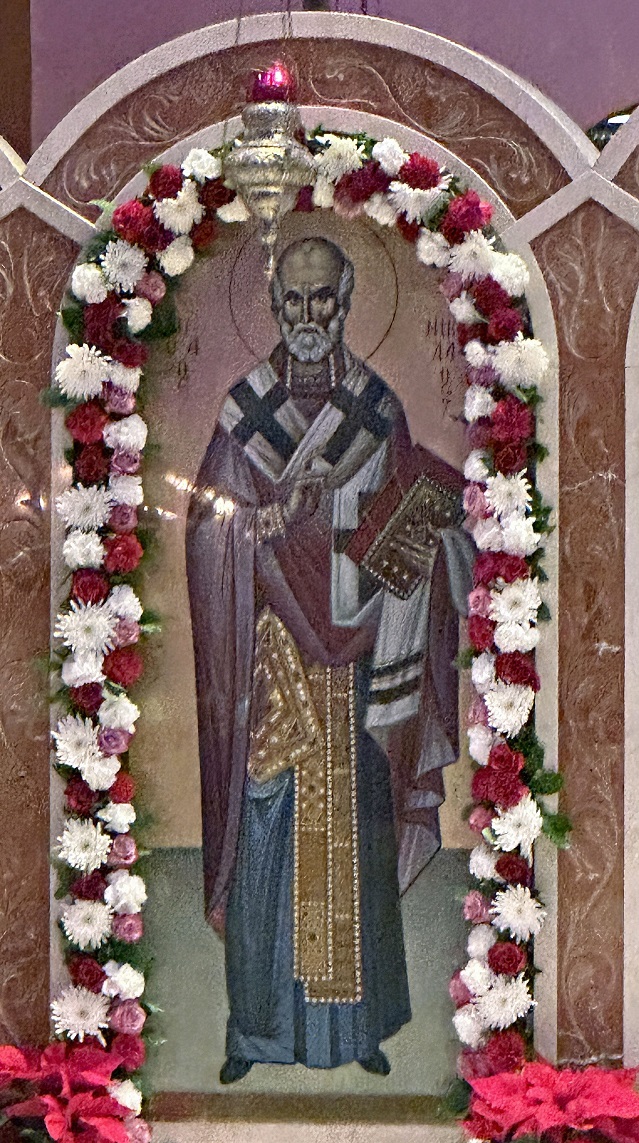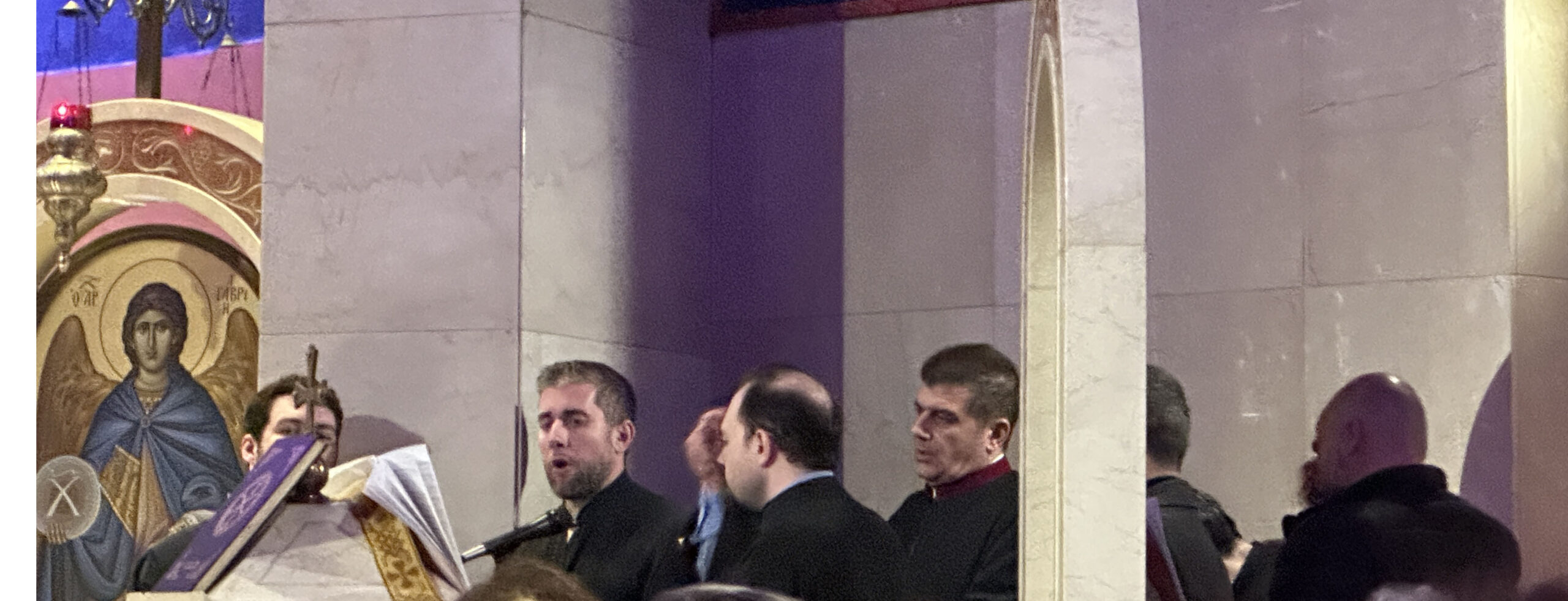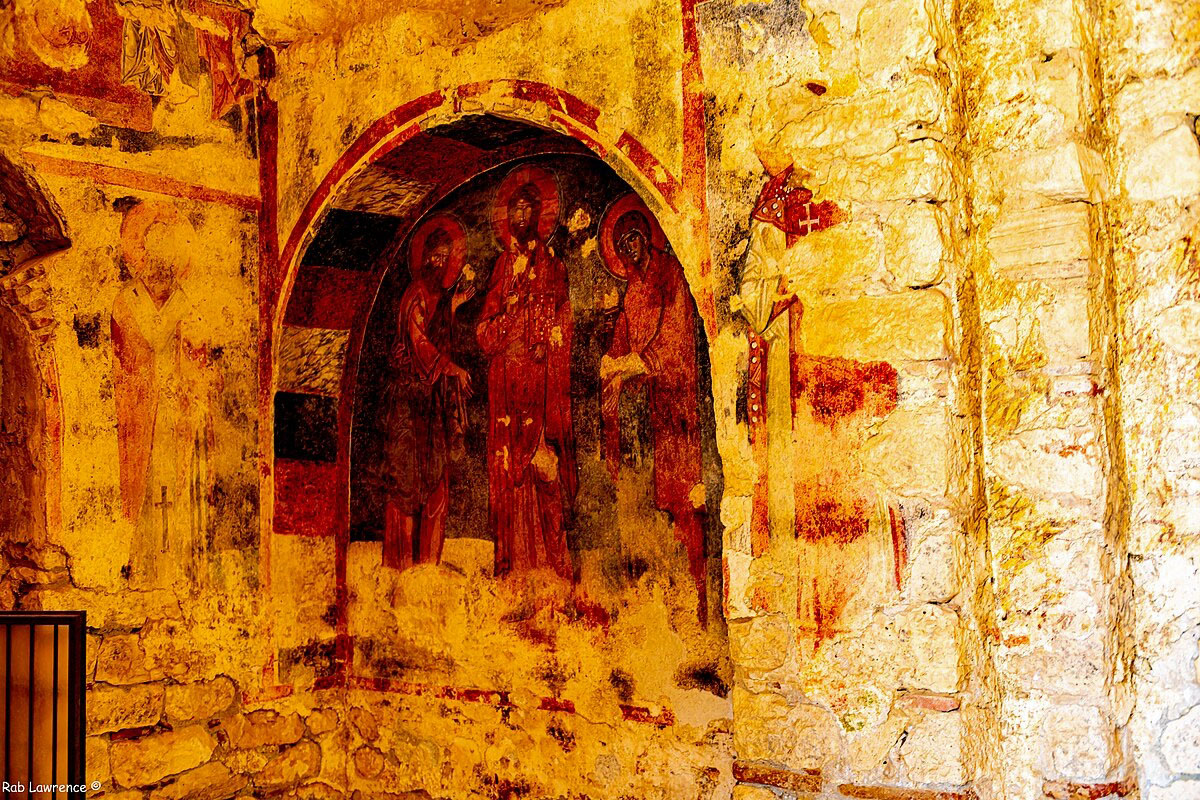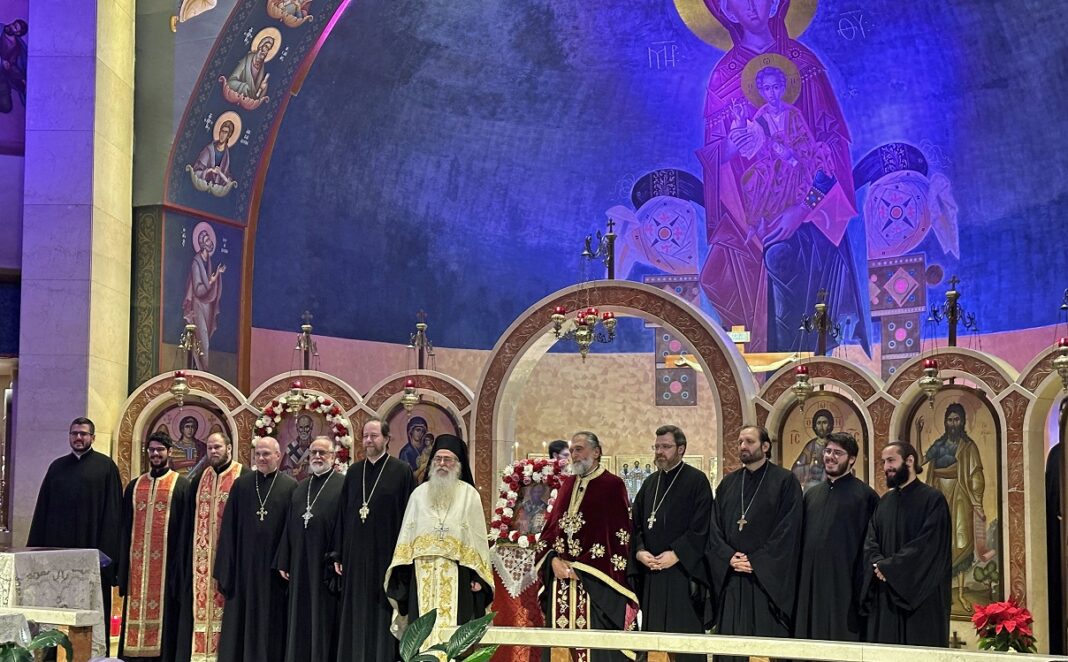By Catherine Tsounis
St. Nicholas is a historical figure with ample proof of his existence. Internet articles attempting to label him as a myth are refuted by the belief of over 220 million Orthodox Christians who firmly acknowledge his existence. Santa Claus, rooted in the extraordinary generosity of St. Nicholas, is not a legend, despite claims made by AP News. The existence of St. Nicholas is supported by factual evidence, and articles on the internet making contrary claims should be scrutinized carefully.
On December 5th, 2023, the St. Nicholas Shrine Church of Flushing, NY, held a Vespers Feast Day, attended by clergy and residents of New York. A reception followed at Sarantakos Hall, with Reverend Protopresbyter Paul Palesty and Reverend Presbyter Aristidis Garinis serving as the clergy of the St. Nicholas Shrine Church. The clergy, Parish council, Philoptohos, and PTA are commended for their outstanding Feast Day Vespers and refreshments. The event brought together members of the New York and New Jersey communities, fostering connections among friends and acquaintances, renewing old friendships. For more information about the prominent clergy and community leaders who attended, please visit https://www.facebook.com/stnicholasflushing.

The extensive investigation into the existence of St. Nicholas of Myra by international scientist Andreas George stands as the final word on the subject. In his work “In the Footsteps of Saint Nicholas,” he meticulously outlines the historical presence of St. Nicholas. George’s scientific examination of sources and historical sites challenges the Vatican’s actions in the 1970s, where St. Nicholas was downgraded as a major saint or considered a mythological figure. George’s goal is to present accurate historical information about St. Nicholas’ life, addressing the conflicting information, distortion, and exaggeration that have surrounded his legacy. The author extensively visited locations that influenced St. Nicholas’ character and conducted research using Greek documents from Byzantine Bari, Italy, Greece, Asia Minor, and Cyprus, ensuring the utmost accuracy. The book details the evolution of St. Nicholas of Myra into Santa Claus, primarily in New York, and offers a comprehensive explanation of his miracles. It also mentions the presence of St. Nicholas’ relics in several New York churches.
St. Nicholas’ ancestors were Greeks, likely descended from Alexander the Great’s colonists or Cretans. The author suggests that St. Nicholas’ ancestors were probably from Crete, based on similar customs and traditions with the Greek island. Modern Greek sources on the Greek Cities of Asia Minor indicate that Greek communities along the Asia Minor coast included up to 50 percent Cretans until the 1922 Catastrophe. Their dialect and customs were also akin to Cretan culture. George’s research adds valuable information by indicating that St. Nicholas spent time in Cyprus through visits to monasteries and study of Greek sources, providing essential insights for serious readers.
The author explains the scarcity of written information about St. Nicholas due to historical events such as the suppression of information by Julius the Apostate, destruction of church documents during the ninth century Iconoclastic movement, and actions by the Crusaders, Muslims, Arab pirates, and the Protestant Reformation.

Of particular interest is the portrayal of Bari, Italy, as a Byzantine stronghold, which contrasts with Modern Greek history books’ emphasis on the fall of Byzantine Bari to the Normans as a major catastrophe. The relics of St. Nicholas were sent to Bari in the 11th century to protect them from Muslim invaders in Myra, Asia Minor. The book offers a detailed history and insight into the construction of the Basilica of St. Nicholas of Bari, shedding light on this Byzantine center in the western world.
The author also delves into what St. Nicholas might have looked like, describing the reconstruction of the saint’s bones in the 1950s by Anatomy Professor L. Martino of the University of Bari and two doctors. Their scientific investigation determined that the bones belonged to a man 1.67 meters (approximately five feet and six inches) tall with a broad forehead and large, sunken eyes—a description reminiscent of the facial characteristics found in Byzantine icons. Professor Martino suggested that the bones likely belonged to a Mediterranean individual, possibly a Greek from Asia Minor.

Andreas George, a scholar with a background in scientific research on radioactivity and radiation exposure, has authored one of the most comprehensive books on St. Nicholas of Myra. The book is available on Amazon.com, and a movie about St. Nicholas is set to be produced in December 2024. For updates on the movie, please visit https://www.facebook.com/NicholasOfMyraMovie?mibextid=LQQJ4d . St. Nicholas lives in the hearts of all. St. Nicholas Shrine Church attracts all people through the devotion of his memory.
References:
1. https://apnews.com/article/saint-nicholas-day-santa-claus-fe4aa5607763558f48171b44036b806d
2. https://greekamericanexperience.wordpress.com/tag/st-nicholas-church/- This is based on numerous articles on this blog.
3. https://www.amazon.com/Footsteps-Saint-Nicholas-Andreas-George/dp/1592320872
4. https://commons.wikimedia.org/wiki/File:Church_of_Saint_Nicholas,_Myra_Turkie.jpg







